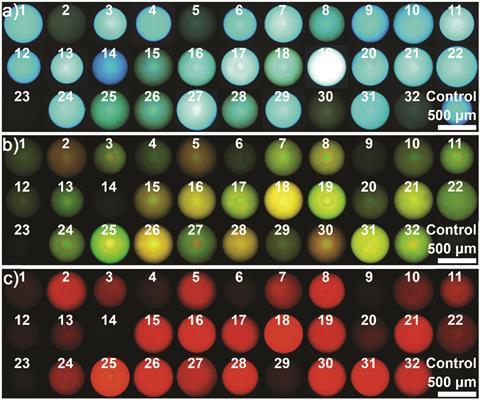New system could find use in food monitoring or disease detection
Download a one-slide summary for use in your classroom (MS Powerpoint or pdf).

Scientists have developed a sensing platform that can distinguish between simple sugar molecules. The system uses small spheres of poly(ionic liquid)s combined with compounds called luminogens, which have fluorescent properties.
The spheres act like taste buds on a tongue. The ionic liquids interact with different saccharides and this causes the luminogens to change colour. Different saccharides produce different colours, allowing the system to tell apart 32 saccharides, including glucose and fructose.
Detecting saccharides has important uses, for example their presence in foods might reveal contamination or spoilage, while saccharides in human serum can show the presence of disease.
Read the full story in Chemistry World.
Downloads
Starter slide sugar detection
PowerPoint, Size 0.17 mbStarter slide sugar detection
PDF, Size 60.69 kb
References
W Zhang et al, Chem. Sci., 2019, DOI: 10.1039/c9sc02266j










No comments yet